Pine beetle
The western pine beetle and mountain pine beetle are native beetles that attacks pine trees in the Kelowna area and throughout western North America. Between 2003 and 2009, the pine beetle populations rose significantly in the Okanagan Valley, causing considerable mortality to native ponderosa pine trees.
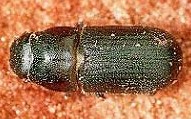
During times of significant outbreak, other non-native pine trees and other conifers can also be attacked. In the past several years we have seen a decline in activity, however some amount of attack will always occur as pine beetles are a native pest to our region.
Infested trees must be treated to destroy beetle brood (e.g. debarked, burned, chipped or thoroughly buried). Do not store infested wood or use it as firewood unless it has been treated.
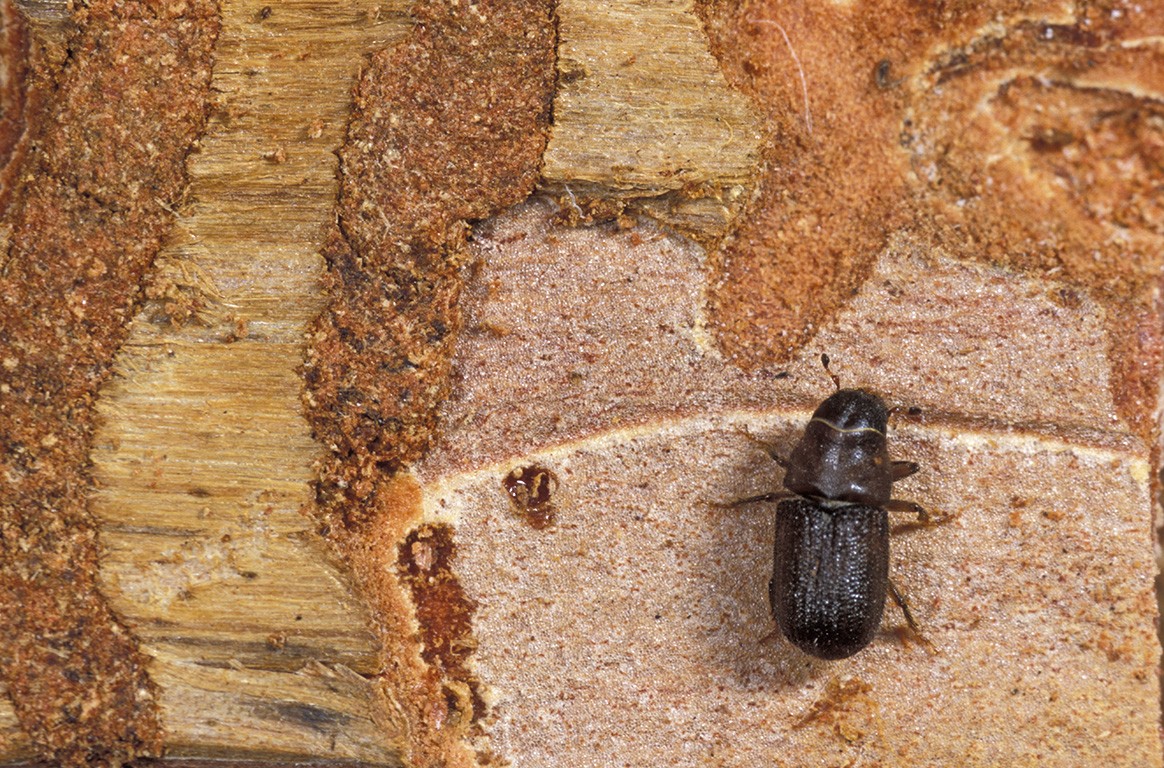
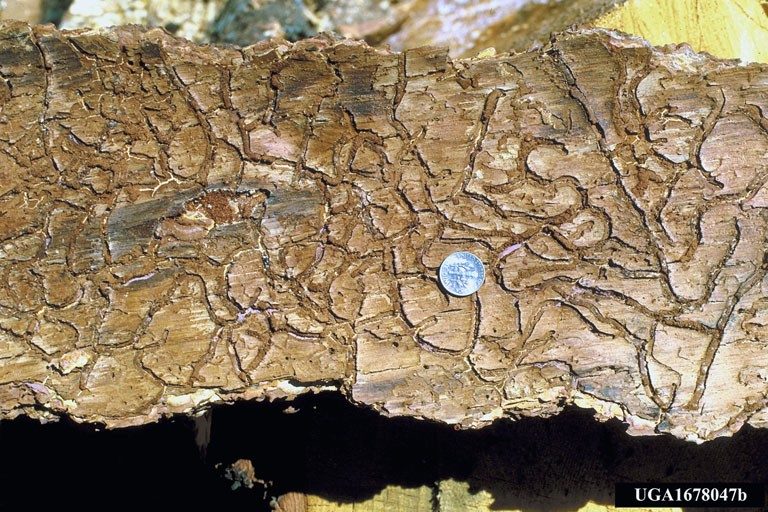
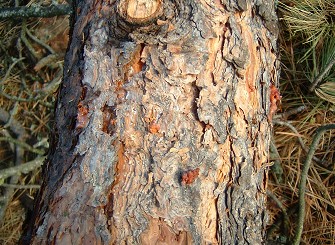
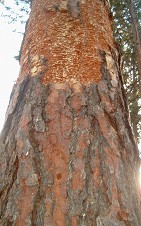
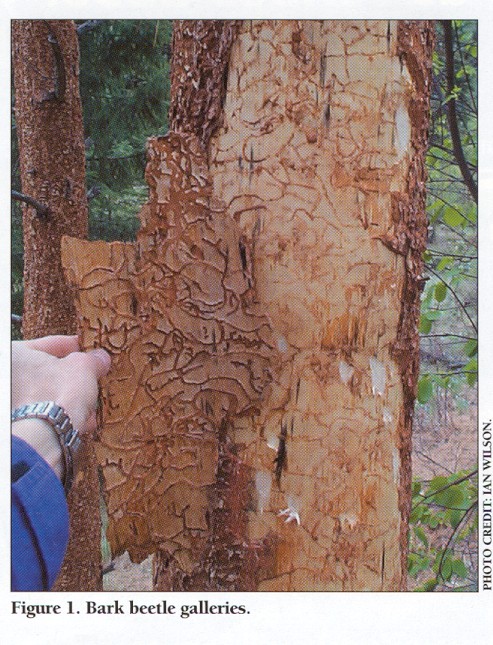
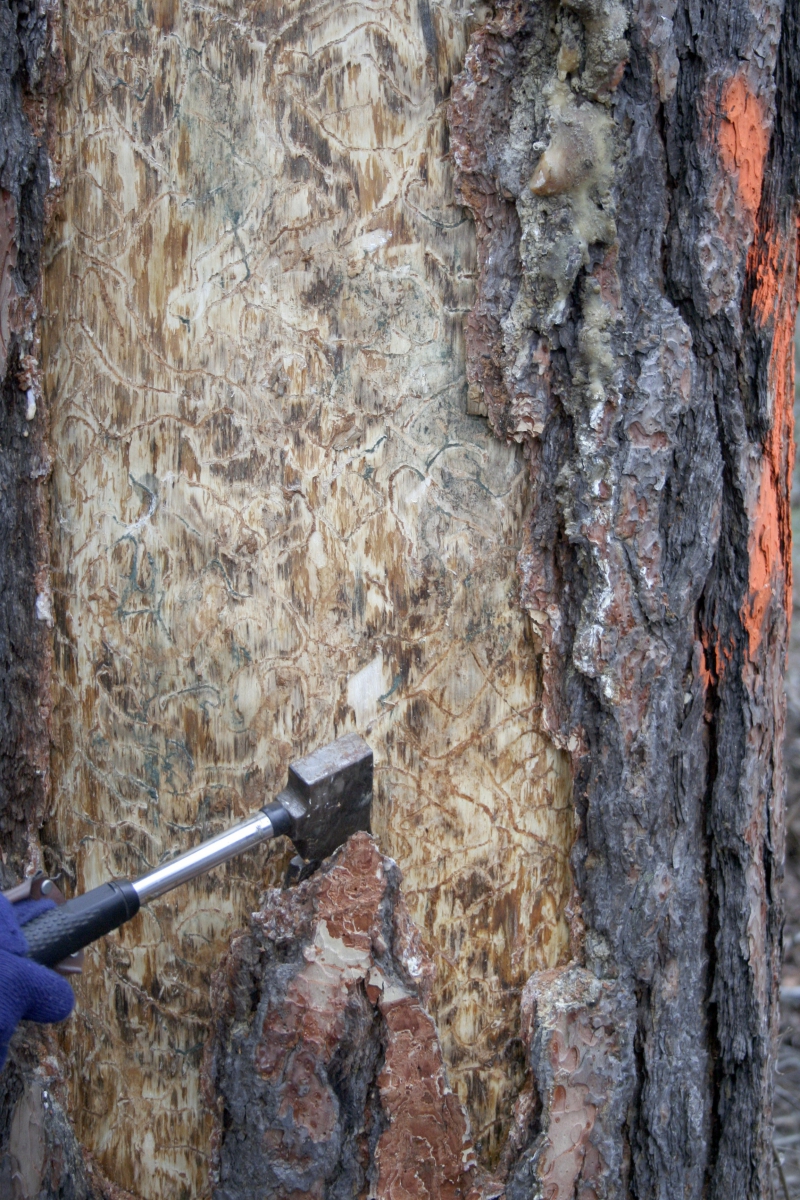
There are no guaranteed solutions to prevent pine beetle attack, but the following are options that have shown some promise in our parks.
Existing infested trees need to be identified and properly disposed of prior to considering any prevention of future pine beetle problems. Don’t use the infested trees for firewood and minimize the transport of the infested material. The landfill will accept the infested wood and grind the material, which exposes the beetle larvae to the elements and kills them.
Trees that are drought-stressed, topped, poorly pruned, injured, root damaged or roots buried in fill will be more susceptible to beetle attack. Avoid pruning live branches during the spring or summer, as beetles may be attracted to pruning wounds. Water your trees in the Summer if possible, but don’t over-water. Be very careful with fertilizers; application of nitrogen fertilizers may actually make the tree more susceptible to attack.
If you have a large stand of trees, consider thinning them out, preferably during the winter so that beetles are not attracted to freshly cut stumps. Research suggests that thinning can help prevent beetle attacks in forested stands. As a minimum guideline, thin trees so that the crowns don’t touch (~150-300 stems per hectare). This also helps reduce wildfire hazard.
Hire a professional to help monitor your trees periodically, or get some training to ensure that you know what to look for yourself. Western pine beetle can attack trees anytime between April–October, while mountain pine beetles generally attack from late June to October. If you find early signs of attack, hire a professional to ensure that infested trees are disposed of promptly and properly.
Verbenone is an insect pheromone and naturally occurring repellent or anti-aggregate that is produced by the beetles to indicate when a tree is “fully occupied” by beetles. Pine beetles aggregate in large numbers on a host pine tree in order to successfully reproduce. Once the number of beetles meets its maximum occupancy of a single host tree, the pheromone, Verbenone is released by the beetle. Verbenone pouches can be stapled to a tree prior to the beetles emerging from overwinter under the bark in the spring.
The Verbenone pouches are registered for use against pine beetles. However, recent research suggests that Verbenone isn’t as effective when beetle populations are high. This product is available locally at some hardware and garden centres.
Sevin (carbaryl) is registered for mountain pine beetle control. Spraying a mature pine tree is potentially hazardous and subject to a number of environmental regulations, and should only be attempted by a pest management professional. Other injectable pesticides such as "ace caps" aren’t registered for this purpose and research has shown that they don’t work.
As early as 1926, wire mesh screen was wrapped around trees to try and prevent beetle attack. Several early attempts were promising and it was found that it was only necessary to wrap the lower 25 feet of the trunk to prevent mountain pine beetle attack. This hasn’t been well-tested against western pine beetles, but early researchers felt that it might not work as well with western pine beetle as they sometimes attack higher in the tree.
The City has wrapped high value trees in areas such as Waterfront Park and Rutland Lions Parks to try and prevent further pine beetle related tree mortality. The material is fibreglass insect screen (the same material used in screen doors). This material is relatively inexpensive and is available in large rolls.
Start by pruning the lower branches and wrapping the trees vertically with only a single seam that is sealed with a silicone caulking compound. The screening is stapled in place, with some extra room for tree growth.
This technique is more environmentally friendly than pesticides and may also offer several years of protection, whereas pesticides would need to be re-applied. However, keep in mind that this technique is still experimental and won’t protect the tops of trees.
Disclaimer: The mention of specific products or companies doesn’t imply an endorsement of those products or companies by the City of Kelowna.



